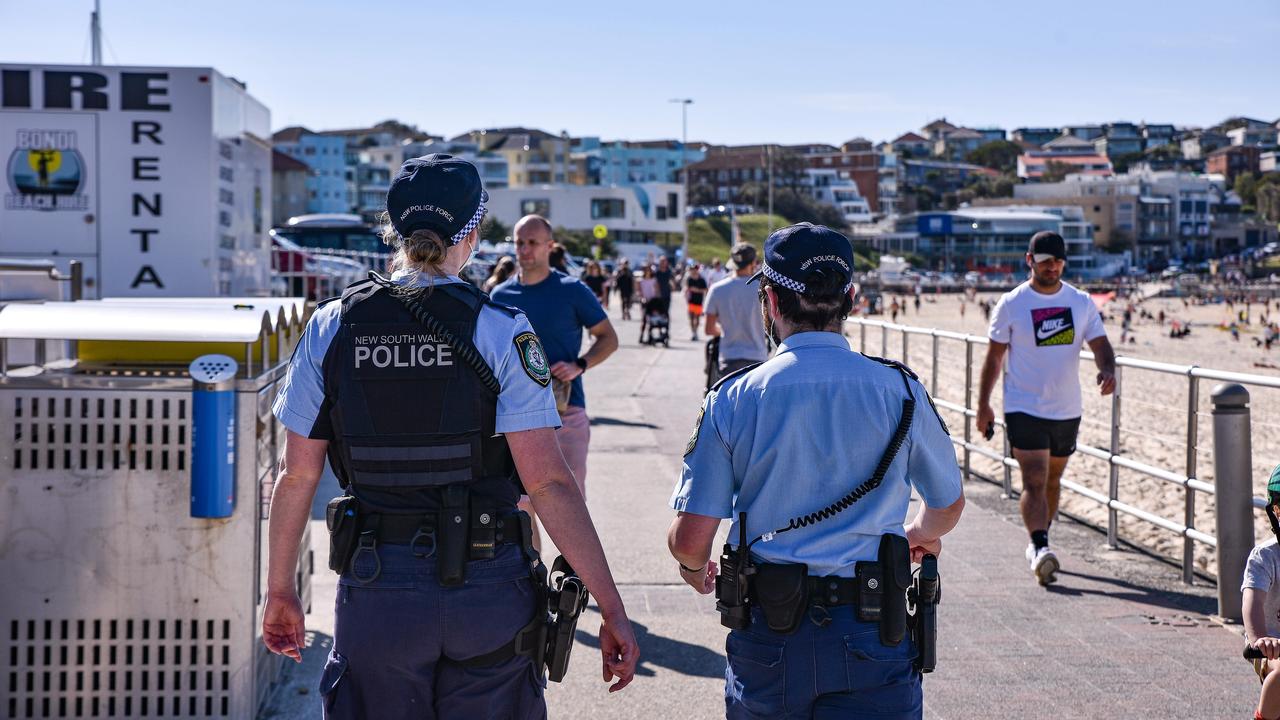Anzac Day: Ranks grow thinner but banners raised higher
Tens of thousands of Australians attend Anzac Day dawn services across the nation, almost 100 years on from the end of WWI.
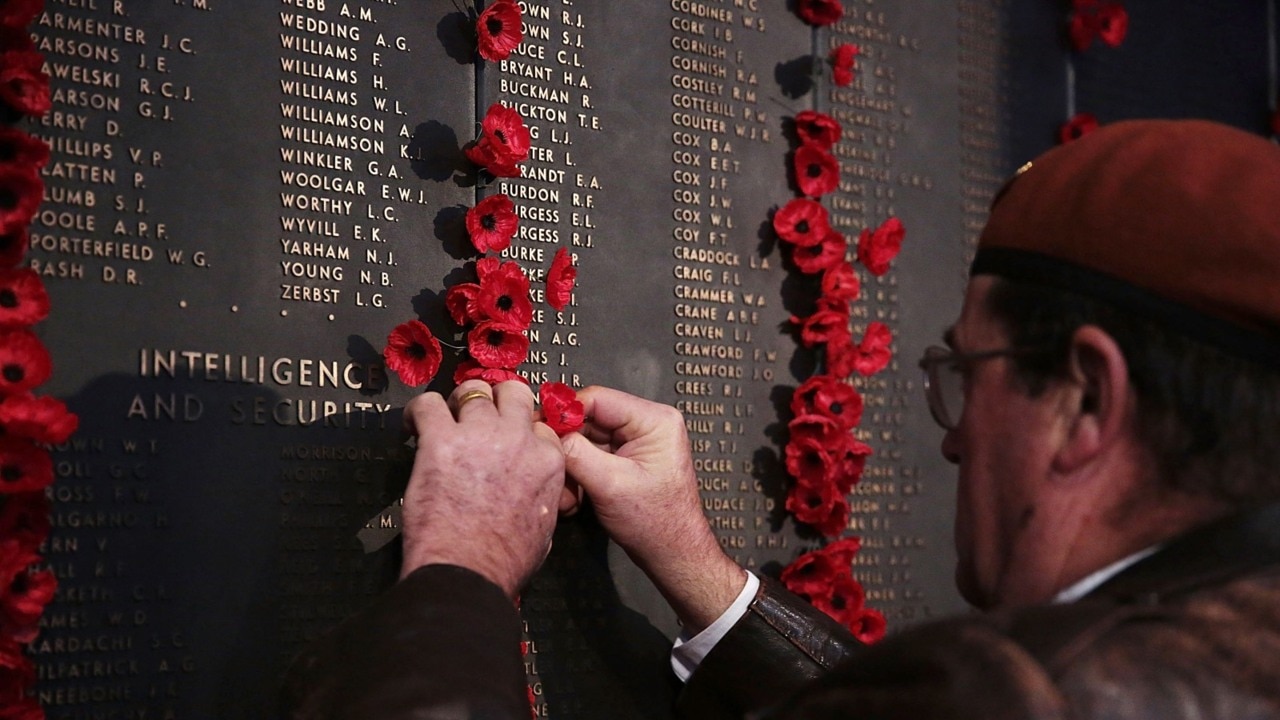
Bagpipes and drums competed with school brass bands, keeping time for marchers as all made their way along Sydney’s Elizabeth Street and drew applause from curb side crowds today.
The Anzac Day march in Sydney was a parade of the surviving veterans of wars past, but dominated by younger generations who have embraced the tradition.
Sydney’s march has swelled so much in size that organisers this year started the event for many marchers in Phillip Street, the heart of Sydney’s legal district, to cope with increased numbers. They added new entry points for participating groups further down the line, and allowed wider space for thousands of onlookers, with crowd barriers placed on the road rather footpaths, easing the squeeze on Elizabeth Street.
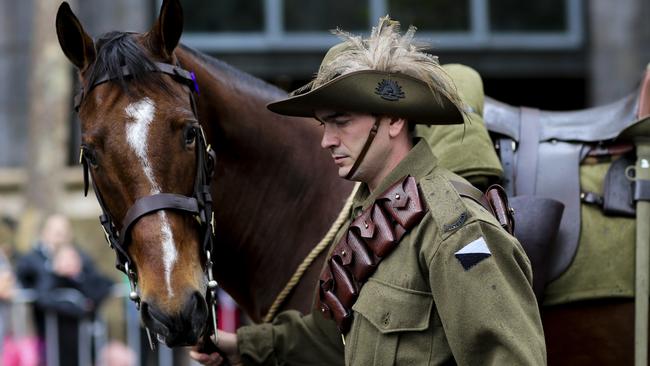
As marchers wound their way around Phillip and Hunter streets before the main route along Elizabeth, other groups joined. They often slowed to a crawl, bunching up while making their way past the Hyde Park war memorial and turning left into Oxford Street..
The ranks of veterans from famous battalions - such as the AIF Timor 23rd and “Sparrow Force” 9 Division Tobruk - were noticeably thinner than in the past. But their flags and banners were held high, and their numbers boosted by the sons, daughters and grandchildren of some original members carrying on the tradition.
Many of these descendants wore the medals of their elders.
Among an extraordinary array of younger generation non-veteran marchers - adding colour and flair - were the Castle Hill RSL Band wearing white “cowboy” hats and bright blue coats; the Malaysian Sikh Band with white turbans and coats and red tartan sashes; and Trinity
Grammar School brass band with white pith helmets and green army dress coats.
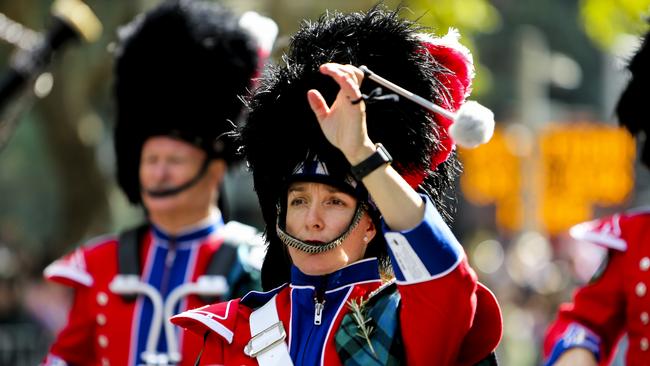
‘They died for our freedom’
Tens of thousands of Australians have attended Anzac Day dawn services across the nation, almost 100 years on from the end of the Great War.
From the largest gatherings in Sydney, Melbourne and Canberra, to smaller services in suburban, regional and rural Australia, and even in Antarctica, the “spirit of Anzac” was remembered.
And in France overnight, Prime Minister Malcolm Turnbull opened the Sir John Monash Centre in Villers-Bretonneux, where Australian troops famously recaptured the town from German forces in 1918, in what is remembered as one of the most significant military victories of the war on the Western Front.
In Melbourne, an estimated crowd of 35,000 people attended the dawn service at the Shrine of Remembrance, on St Kilda Road.
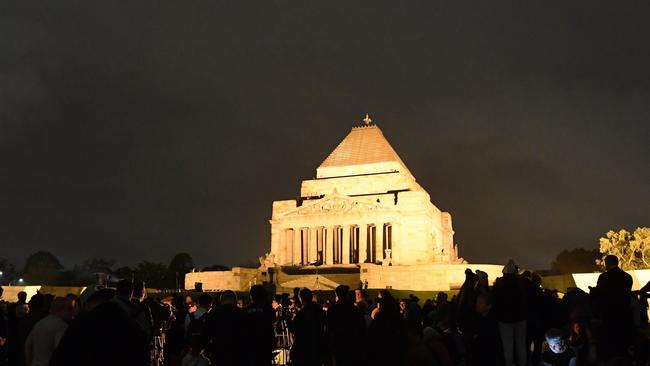
A large police presence was evident, with some officers positioned on the Shrine itself, in keeping with the ramped-up security efforts of recent Anzac Day events.
For Dougal Robertson, 14, who attended the Melbourne memorial with his father Dougal, it was his first Anzac Day dawn service.
“It’s important to remember all the Australian lives that we’re lost — sometimes thousands in the space of a few days,” he said.
“They died for our freedom.”
Compere Peter Meehan’s voice wavered throughout the ceremony.
“Imagine 10 of your closest friends ... imagine two are dead, one is blind, one is missing limbs ... the rest are shell shocked,” he said.
“The (First World) War did not end for these men in 1918.”
Annette Holian, the service’s main speaker, spoke of her career and the men and women she aided in various war zones.
“There was the young soldier whose hand was blown to pieces by a grenade,” she said.
“We tried to put enough of it together so he could hold his newborn baby.”
Dr Holian also noted female veterans and encouraged young women to “push their boundaries”
The wreath was laid by Victorian Governor Linda Dessau, accompanied by Premier Daniel Andrews and state Opposition Leader Matthew Guy.
Communications Minister Mitch Fifield represented the federal government.
In Canberra, the 5.30am service was preceded with images and stories of Australians who died in Afghanistan being projected onto the walls of the National War Memorial
As birds stirred in the gums on an unusually mild morning in the nation’s capital, chaplain Peter Willis delivered the Anzac dedication, remembering those who went into battle at Gallipoli, “at this hour, on this day, 103 years ago.”
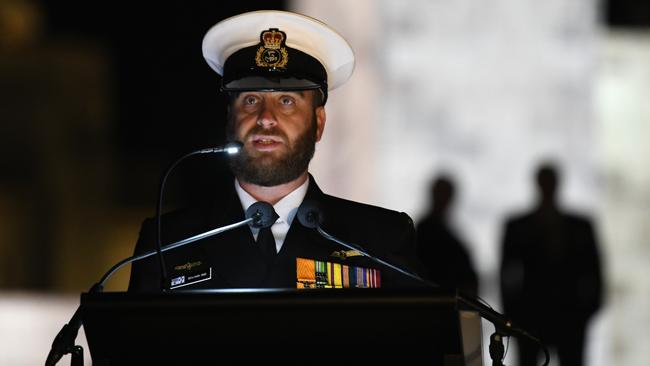
Retired colonel and surgical oncologist Susan Neuhaus gave the commemorative address, reflecting on her time in Afghanistan and giving thanks for the service of more than 100,000 Australians who gave the ultimate sacrifice.
“Like all of us, I benefit from what they have done,” Colonel Neuhaus.
“Inscribed in these walls behind me are the names of 102,000 Australians who have lived, and fought and died for our country.”
Thousands of people attended the dawn service in Sydney’s Martin Place, with the clear morning and mild temperatures drawing one of the largest Anzac Day crowds of recent years.
The ceremony, which was marked by a heightened security presence that saw additional police and concrete bollards in place, began with a moving poem reading by NSW Premier Gladys Berejiklian.
Poignant photographs of servicemen and women, sourced from the NSW State Library and Australian War Museum were projected onto Challis House, opposite the Cenotaph, throughout the ceremony.
In the Commemoration Address, Air Vice Marshall Steven Robertson said the service “wasn’t about commemorating war,” but about the servicemen and women’s “strength and quality of their character”.
He said the next challenge was to ensure “the spirit of the Anzacs is passed on to our children”.
Dawn service Bondi pic.twitter.com/zB4ckkvTW0
— Caroline Overington (@overingtonc) April 24, 2018
During the Sydney Male Choir’s rendition of There is No Death, some of the elderly ex-servicemen seated in front of the cenotaph were bought to tears. The song has been a feature of the service and performed by the same choir since 1935.
Foreign Minister Julie Bishop, Acting Opposition Leader Tanya Plibersek, and NSW Governor David Hurley were among the thousands gathered for the service.
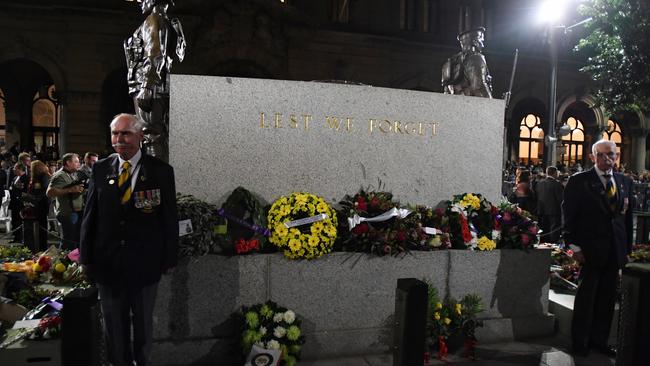
Dawn services in Bondi, in Sydney’s east, and Balmain, in the city’s innerwest, have also surged in popularity in recent years, and were again well attended this morning.
Guest speaker Stuart Waldon, from 1st Balmain Scouts, told of how the heavy conflict in Villers-Brettoneux was a defining moment for Australia’s place in the world, and rated as an important part of beating back the advance of German troops near the end of World War One.
Tributes were also given for those who fought and died in other international wars, including the Korean, Vietnam and more recent conflicts in Iraq and Afghanistan.
Representatives of the combined defence forces and local community groups laid wreaths at the local Balmain cenotaph.
Aunty Deborah Lennis, who also laid a wreath, opened the dawn service with a Welcome to Country in which she remembered the early contribution of young Aboriginal men who fought for Australia but were not recognised at the time.
She said Aborigines could not officially sign up because they were not then regarded as Australian citizens and could not participate because of their race. But she said many were determined and did sign up, including for the Boer War, the first to involve Australian
participation. Some were not permitted to return from the Boer conflict to Australia, she said.
In Moree, in northern NSW, the kookaburras cackled in the tall river gums along the Mehi river as the small band of remaining servicemen and women gathered in the dark this morning for the town’s traditional dawn service.
As the sky glowed pink and the bagpipes played Waltzing Matilda, the few remaining ageing marchers were quickly joined by small kids in farm boots proudly wearing their grandfathers’ medals of past wars.
Utes and dusty 4WDs came from far across the plains to join the silent gathering of more than 400 locals outside Moree’s yellow brick Services Club.
Lloyd Fletcher, 93, who trained in the Army at the tail end of World War II and served in Vietnam, left his walking frame in the car park to walk unsteadily to lay a wreath on behalf of lost friends from the bush town of Bingara, southeast of Moree.
The medals on his left chest were his; but the long row of five shiny WWII medals on his right side had belonged to his late father John Silvester Fletcher.
“He enlisted in Bingara and was away from home from 1939 to 1945; he was in Egypt and the Middle East and was the most decorated soldier in the north (of NSW),” the spritely former veteran said.
“But he never talked about it; he’d seen a lot but never talked.”
Mr Fletcher said the ranks of WWII servicemen are thinning in Moree, with just six “RSL men” left.
“But it’s great to see the kids all out, ” he said, smiling at the small kids in flannel pyjamas and boots, scattered through the crowd. “It’s getting bigger every year.”
A crisp Adelaide morning did not deter several thousand people from gathering at the city’s War Memorial on North Terrace for the dawn service.
Governor Hieu Van Le, Premier Steven Marshall, Opposition Leader Peter Malinauskas, and senators Simon Birmingham and Penny Wong were among those to lay wreaths in honour of past and current military personnel.
In Brisbane, thousands of people gathered in drizzling rain to remember the fallen.
Armed with umbrellas and coffee, families, veterans and locals met in a darkened Anzac Square in the CBD to for the solemn service, which began at 4.28am. The muffled sound of drums on Adelaide Street heralded the arrival of the Veterans Parade.
Children perched atop shoulders to watch wreaths being laid at the Shrine of Remembrance.
In Darwin, those attending the city’s main dawn service, held at the cenotaph overlooking Darwin Harbour, were reminded how Anzac Day holds a particular resonance for them given the city’s history of being attacked during World War II.
More than 90 bombs were dropped on the city 76 years ago, and Darwin was still home to 12,000 defence force personnel to whom the nation is grateful, Indigenous Affairs Minister Nigel Scullion told the crowd.
There were big screens erected across Kings Park in Perth to cater for an expected crowd of up to 40,000 at the city’s main dawn service.
After the last post and one minute of silence at the state’s war memorial above the Swan River, Brigadier Peter Moore — commander of the 13th brigade — gave an address on the “almost incomparable sacrifice of so many young lives”.
“Look after your mates, be loyal, do the right thing regardless of the personal consequences and have the courage to say what you believe to be right, and more importantly resist what you believe to me wrong,” he said.
Brigadier Moore said service men and women upheld Australians’ right to voice their opinion and elect their own government in a democratic manner.
“Those freedoms were and currently are defended by service men and women,” he said.
Jakob Matuszyk, 8, watched the 50-minute service with his father Tim; he asked his father to bring him after learning about ANZAC Day at school.
“He wants to find out more about the ANZACs and the history behind the war memorial,” Mr Matuszyk said.
Eleven members of the Thompson family from Queensland and Western Australia were at the Kings Park service this morning, partly to honour service by four generations of Thompson men.
Jim Thompson, who served in southeast Asia., and his son Matthew, who served in East Timor and the Solomon Islands, wore the medals of their respective grandfathers to the dawn service.
Further afield, at the Casey research station in Antarctica, snow, ice and below-zero temperatures didn’t dissuade Australia’s Antarctic expeditioners from paying their respects.
The team of 26 was led by expeditioner Rebecca Jeffcoat, who has been with the Royal Australian Navy for 28 years and served in the Middle East.
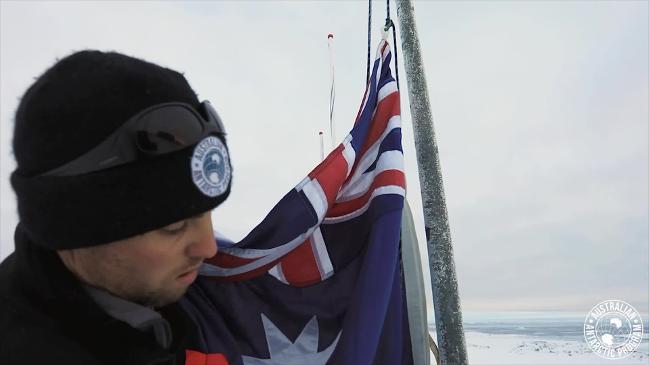
“I’ve been to many Anzac Day events over the years and today’s service, held against a backdrop of icebergs in Newcomb Bay, is one I will never forget,” she said.
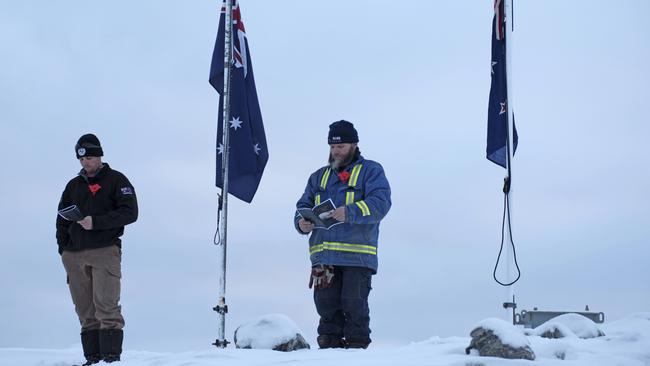
The team, who are spending the winter at the research station, gathered under the flagpole in -15C.
“Expeditioners took the opportunity to proudly share their family member’s service experience; in the Boer War, lost at sea in World War II and in Afghanistan,” Ms Jeffcoat said.
“As we dig in for a long winter, we can imagine some of the challenges our defence men and women face when deployed to far-off and often hostile places.”
The service was followed by a gunfire breakfast and games of two-up. Australia’s Antarctic program has long links with the Australian Defence Force since it was founded in 1947.
Additional reporting: Olivia Caisley, Brad Norington, Sue Neales, AAP

